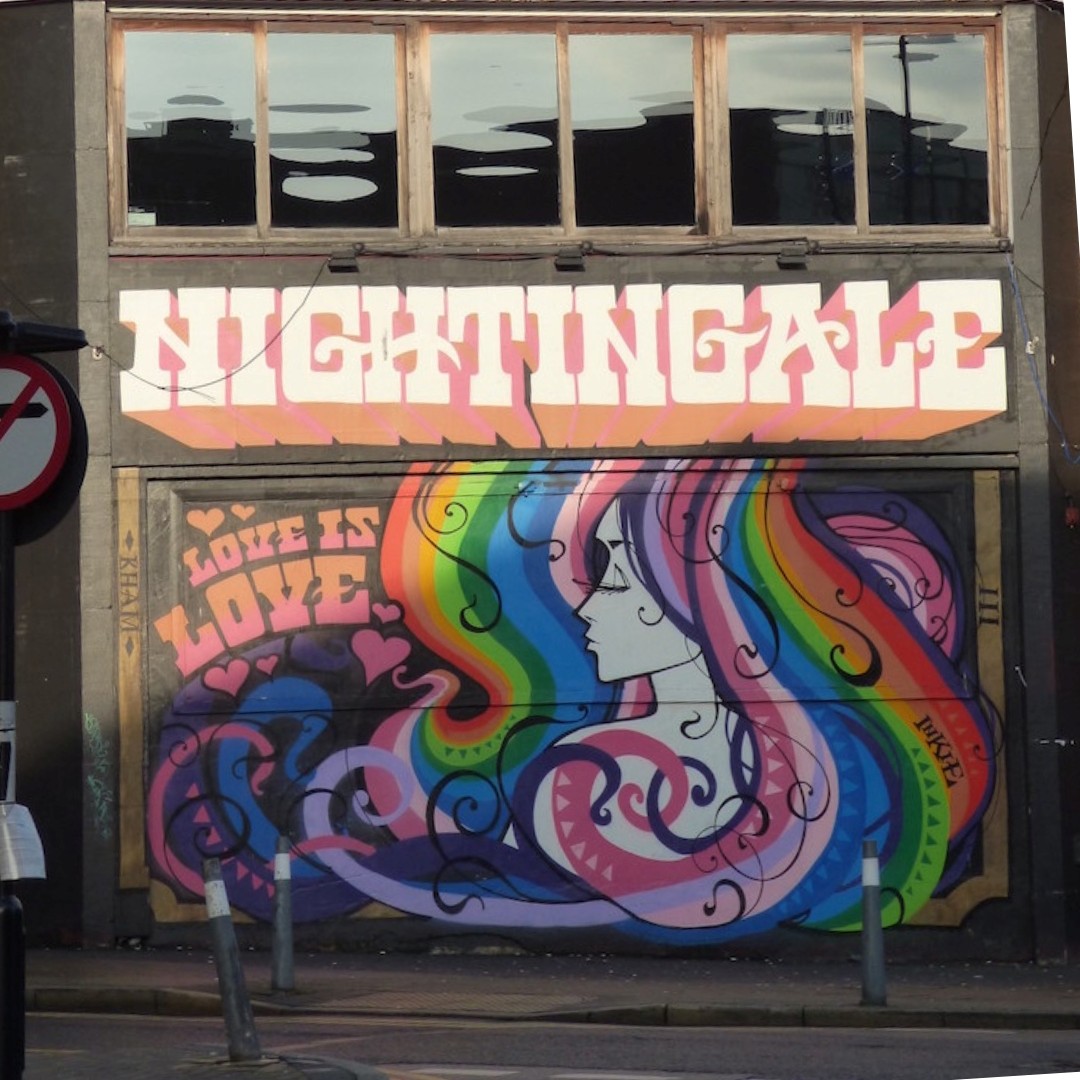Pride season celebrates members of the LGBTQ+ community and their ongoing push towards equity and visibility; where everyone feels seen, respected, and valued. Gay villages can be the most obvious manifestation of an area of a town or city where members of the LGBTQ+ community can gather to be their authentic selves without fear of judgement or discrimination.
These spaces are important for the reasons noted above, but they’re also important parts of a city’s cultural fabric and economy.
These inclusive, fun, bright, and vibrant ‘gaybourhoods’ often overlap with other neighbouring districts with different functions, such as residential or business.
When it comes to sustaining, growing, and even building new developments linking to a gay village, integration is paramount, with a set of key guiding principles that are essential for successful outcomes that prioritise community needs without isolation from the areas that surround them.

How is Birmingham's gay village affected by city regeneration projects?
Birmingham boasts a long and storied history of attracting different communities, creating a melting pot of cultures, and hosting creative expertise and artistry.
That same spirit is still visible in the city’s gay village, which dates back to 1976, when the Birmingham Gay Community Centre was opened. It was the first LGBTQ+ community centre to be established in the UK and paved the way for the establishment of similar institutions across the country.
Historically, LGBTQ+ districts were established on the outskirts of cities due to stigma and financial factors. Now, Birmingham’s gay village sits near the city centre, surrounded by other thriving communities.
New city centre development plans have been presented by Birmingham City Council, and the question on many people’s minds is: how can regeneration and reintegration sit side by side for the gay village’s existing residents?
RIBA spoke to city planners and lead developer Lendlease to see how they’re looking to bring in high density residential accommodation while keeping the vibrant gay village thriving to create a space that benefits everyone.
Neighbouring Birmingham’s gay village is Smithfield, a £1.9billion city centre redevelopment site, once home to the city’s wholesale markets and owned by Birmingham City Council, which has long been promoting it as a strategic regeneration area.
Selina Mason, Lendlease’s Director of Masterplanning and Strategic Design, says that although there is still a lot of detailed design work to do, cranes should finally start appearing on the skyline next year for the first phase of the mixed-use development. This will feature new markets and a large public festival square.
The scheme will connect the Southside gay village and neighbouring Chinatown with Digbeth, but the looming concern for the LGBTQ+ community is that the tide of incoming investment will overwhelm the gay village and force the businesses further out of the city centre, causing isolation and segregation that many LGBTQ+ communities have spent decades trying to prevent.
When making considerations for regeneration projects that will have an impact on longstanding communities, it's important to consider several factors – many of which the Smithfield redevelopment project has begun addressing due to concerns from the LGBTQ+ community:
1. Noise and nighttime economy
The great regional success story that Birmingham would like to emulate is Manchester, whose vibrant gay village is well integrated and has been thriving since the 1950s.
Ben Simm, EDI Lead and General Assembly Rep for Royal Town Planning Institute (RTPI) West Midlands, says the area’s clubs and venues are already starting to face noise objections from incoming residential developers, although the landmark Nightingale Club, the village’s longest running gay venue, did manage to do a deal with residential developer Prosperity Group, which opted to work with the LGBTQ+ community and pay for the club’s sound-proofing.
The gay village economy is regarded as fragile and at risk, as it is underpinned by a relatively small number of privately owned anchor businesses, often in formerly abandoned commercial and industrial buildings, that keep the area partying.
2. Creating safe spaces for all hours of the day
The challenge is also to create safe spaces - a key principle of inclusive design - says Ben, where the queer community can gather and feel comfortable without feeling marginalised. This includes the approaches into the village, not just the epicentre. This calls for active streets and frontages and, ideally, round-the-clock activity rather than a keep-it-down curfew and then shut down.

3. Working with surrounding neighbourhoods
The gay village has enclave characteristics with development already encroaching, including a squeeze from an expanding China Town, says Selina. Lendlease’s masterplanning ambition is to create a series of streets and visible environments that will encourage the sort of entrepreneurial culture that established the gay village in the first place.
“We’re trying to create real centres of activity, destination and connectivity from the very early hours through to very late so that people will feel safe and comfortable,” Selina says. “The sign of success for me would be to see the gay village feeing that it has the freedom to expand and so become more stable and sustainable.”
She continues: “There will be new markets [in the new development] that will be brilliant for anchoring very early activity. There will always be lots of different eyes on the street, which is at the root of creating safe and inclusive spaces.”
The city’s planners are having to learn quickly how to make good neighbours out of residential blocks and lively, and inevitably noisy, streets. The usual suburban methodologies do not apply in terms of environmental health.
“Buildings need to be designed well enough to give residents the freedom to enjoy a quiet night, but activity and noise are part of what makes the city exciting. I think Birmingham is on a journey towards embracing the urban renaissance,” Selina says.
4. Environmental considerations
Environmental health officers have emerged as key stakeholders, Selina adds, as Lendlease continues to have lots of detailed discussions about the night-time economy.
Ben points to the commonalities with Manchester, where many of the original gay village venues had once been surrounded by derelict or abandoned buildings have been redeveloped. Both are also a very short walk from the heart of the city centre.
Meanwhile he remains optimistic about the village’s future: “The great thing about Birmingham that everyone forgets is that we embrace everybody. It doesn't matter who you are, Birmingham has always been a city where everyone gets along.”

Principles of inclusive design for architects
For any architect, it's also important to consider the key principles of inclusive design - highlighted in RIBA's Inclusive Design Overlay - when addressing the risks and rewards of regeneration projects such as this one:
- authenticity: prioritising the needs and lived experiences of core users, and staying true to a building or neighbourhood's previous or current spirit;
- community and stakeholder engagement: collaborative approaches to understand specific challenges and needs help to ensure projects cater to the diverse needs and preferences of all users.
- identifying barriers: understanding the challenges that prevent a building or space from being accessible and usable by everyone;
- flexibility: designing for diverse needs means allowing for adaptability and openness to change;
- empathetic design: ensuring that designs can be used by people of all abilities, avoiding segregation or stigma.
The hope is that even with wholesale change and redevelopment, Birmingham’s reimagined gay village will help reinforce the city’s longstanding ethos of diversity and inclusion for the next century and beyond.
Thanks to Ben Simm, RTPI West Midlands; Selina Mason, Lendlease.
Text by Neal Morris and Paul Hirons. This is a Professional Feature edited by RIBA Practice team. Send us your feedback and ideas.
RIBA Core Curriculum topic: Inclusive environments.
As part of the flexible RIBA CPD programme, professional features count as microlearning. See further information on the updated RIBA CPD core curriculum and on fulfilling your CPD requirements as a RIBA Chartered Member.









